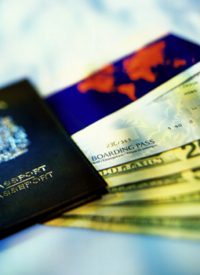
The global regulation of banks took a major leap forward with the conclusion on September 12 of a round of talks held at the Bank of International Settlements (BIS) in Basel, Switzerland. Present were central bankers and regulators from 27 countries, trying to come up with tougher international regulations to prevent another banking crisis like the one we have been enduring for the past couple of years.
The set of rules agreed upon, which are being called the Basel III rules, will give banks until the end of the decade to come into compliance with new global financial standards, including a mandatory reserve of so-called “Tier 1 capital” of six percent (up from four percent) and an additional emergency reserve — a “conservation buffer” — of 2.5 percent. Champions of the new rules, like Jean-Claude Trichet, chairman of the European Central Bank, believed the measures would strengthen the global economy in coming years by — in Trichet’s words — leading to a “fundamental strengthening of global capital standards.” Others, like Sheila Bair, head of the FDIC, pushed for a quicker phase-in and for still higher capital standards. Banks themselves, especially cash-strapped large European banks, were relieved at the long phase-in, which they hope will buy them time to get their financial houses in order.
At root, Basel III is an attempt to harmonize across international boundaries the most critical feature of modern fractional-reserve banking: the fraction of total assets required to be held in reserve for a bank to be deemed “sound” by those that regulate it.
The real problem, as lonely voices like economists Murray Rothbard and Jesus Huerta De Soto have been pointing out for decades, is the now almost universally acclaimed institution of fractional reserve banking itself. Contrary to what might be assumed, banks did not always operate on a fractional reserve basis. The Bank of Amsterdam, for example, was founded in 1609 after years of financial chaos stemming from fraudulent banking practices. As De Soto describes it:
The hallmark of the Bank of Amsterdam was its commitment, from the time of its creation, to the universal legal principles governing the monetary irregular deposit. More specifically, it was founded upon the principle that the obligation of the depository bank … consists in maintaining … at all times a 100-percent reserve ratio with respect to “demand” deposits. This measure was intended to ensure legitimate banking and prevent the abuses and bank failures which had historically occurred in all countries where the state had not only not bothered to prohibit and declare illegal the misappropriation of money on demand deposit in banks, but on the contrary, had usually ended up granting bankers all sorts of privileges and licenses to allow their fraudulent operations, in exchange for the opportunity to take fiscal advantage of them.
The Bank of Amsterdam maintained the practice of full reserves for a century and a half, allowing it to weather the various financial panics that ravaged Europe during the 17th and 18th centuries. Since it had full reserves, it could return every cent to depositors in the event of a run.
The result? Instead of being shackled by an inability to pyramid fictive assets on top of existing reserves (and thereby contributing to economic bubbles), the Bank of Amsterdam became the cornerstone of its city’s unparalleled prosperity and stability during that time. Confidence in the bank never wavered, and monies poured into its coffers. Wrote the French Ambassador to Louis XIV (one of the most profligate monarchs in European history):
Of all the towns of the United Provinces [i.e., Holland], Amsterdam is without any doubt the foremost in greatness, wealth, and the extent of her trade. There are few cities even in Europe to equal her in the two latter respects; her commerce stretches over both halves of the globe, and her wealth is so great that during the war she supplied as much as fifty millions a year if not more.
Unfortunately, the Bank of Amsterdam succumbed to the siren song of fractional reserve banking by the late 1700s, leaving the world without a salutary example of truly honest banking from that time to this.
Compounding the evil of fractional reserve banking was the almost universal abandonment, in the early 20th century, of the gold and silver standards that kept both banks and governments at least nominally honest. For while precious metal standards did not prevent the issuance of paper currency above and beyond what reserves actually justified, they at least discouraged banks — particularly central banks — from simply printing more money to cover shortfalls.
The modern banking system allows and even encourages banks to do what no other kind of business would ever be permitted to do, namely, to create new assets out of thin air by claiming demand deposits as assets to be loaned out for profit. And whenever the general public starts to get wise to their gimmickry, banks simply turn to their governments for fresh infusions of inflationary credit and for taxpayer-funded bailouts. Banks in their turn are happy to participate in the overall expansion of the money supply, permitting governments to print money to pay for expenses not covered by direct levies.
Thus modern banking has become, on an international scale, a thoroughly dishonest scheme in which governments grant bankers “all sorts of privileges and licenses to allow their fraudulent operations, in exchange for the opportunity to take fiscal advantage of them.”
Not only does Basel III perpetuate this fraud, it also sets further precedent for the international regulation of banking and finance, and for the further dilution of American financial sovereignty. It is yet another step toward a future in which finance and banking have become completely globalized, with a global central bank, a global currency, and global financial regulatory bodies eclipsing national banks, currencies, and regulators altogether.
Were all banks simply required to conduct their business honestly, as the Bank of Amsterdam once did, there would be no need to quibble over the optimal amount allowed as a fractional reserve. Instead, all banks would be required to hold 100-percent reserves, in specie, to cover all demand accounts, reserving term accounts like CDs and other types of genuine loans for re-lending at a premium. In the short run, of course, such a system would put the brakes on the reckless rate of economic expansion typical of bubbles. In the longer run, however, global finances would become like those of 17th-century Amsterdam; there would be no panics or crises of legitimacy, and confidence would soar.
Most importantly, perhaps, organizations like the BIS and central banks like the Federal Reserve would no longer be needed. But that, naturally, is an outcome the Bernankes and Trichets of the world refuse to contemplate.



